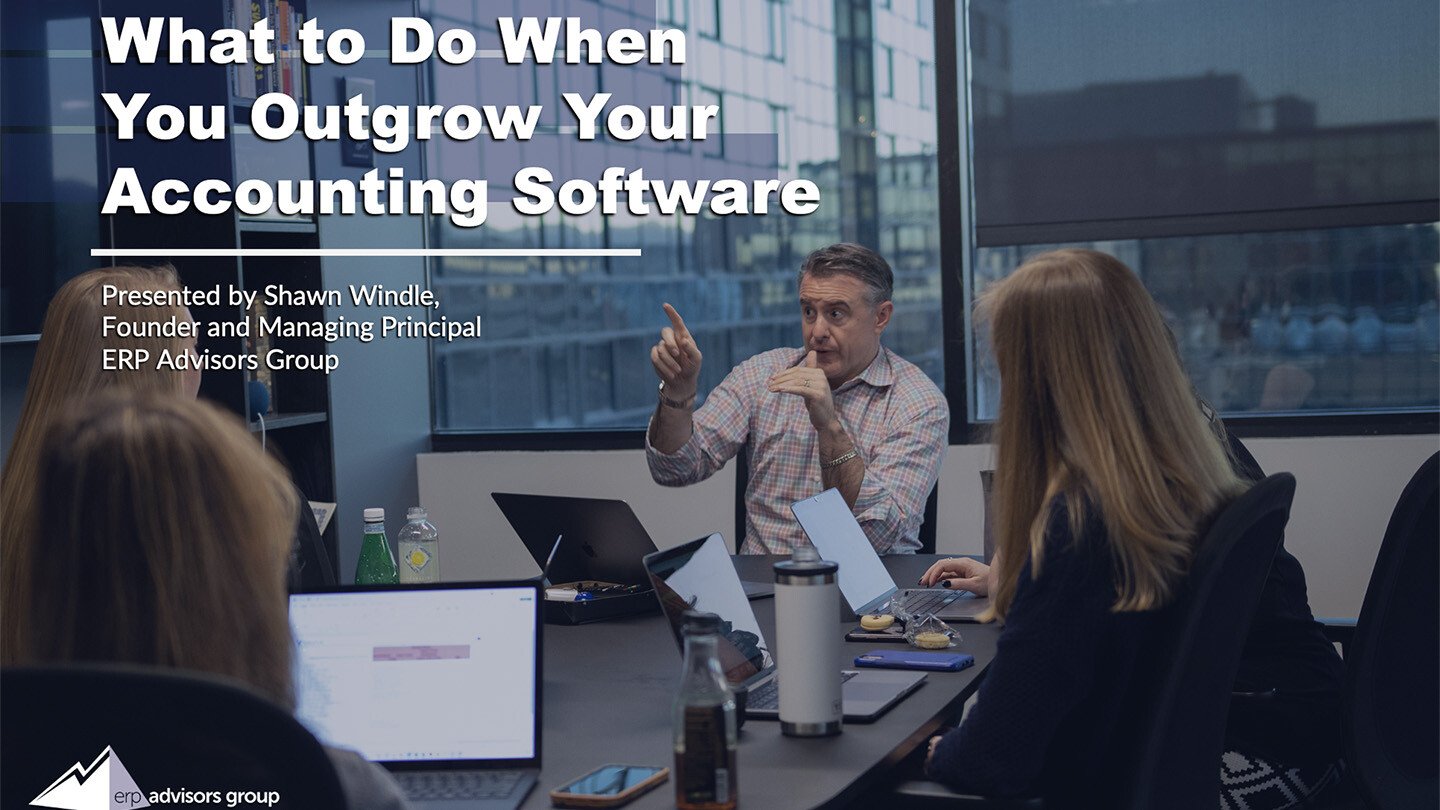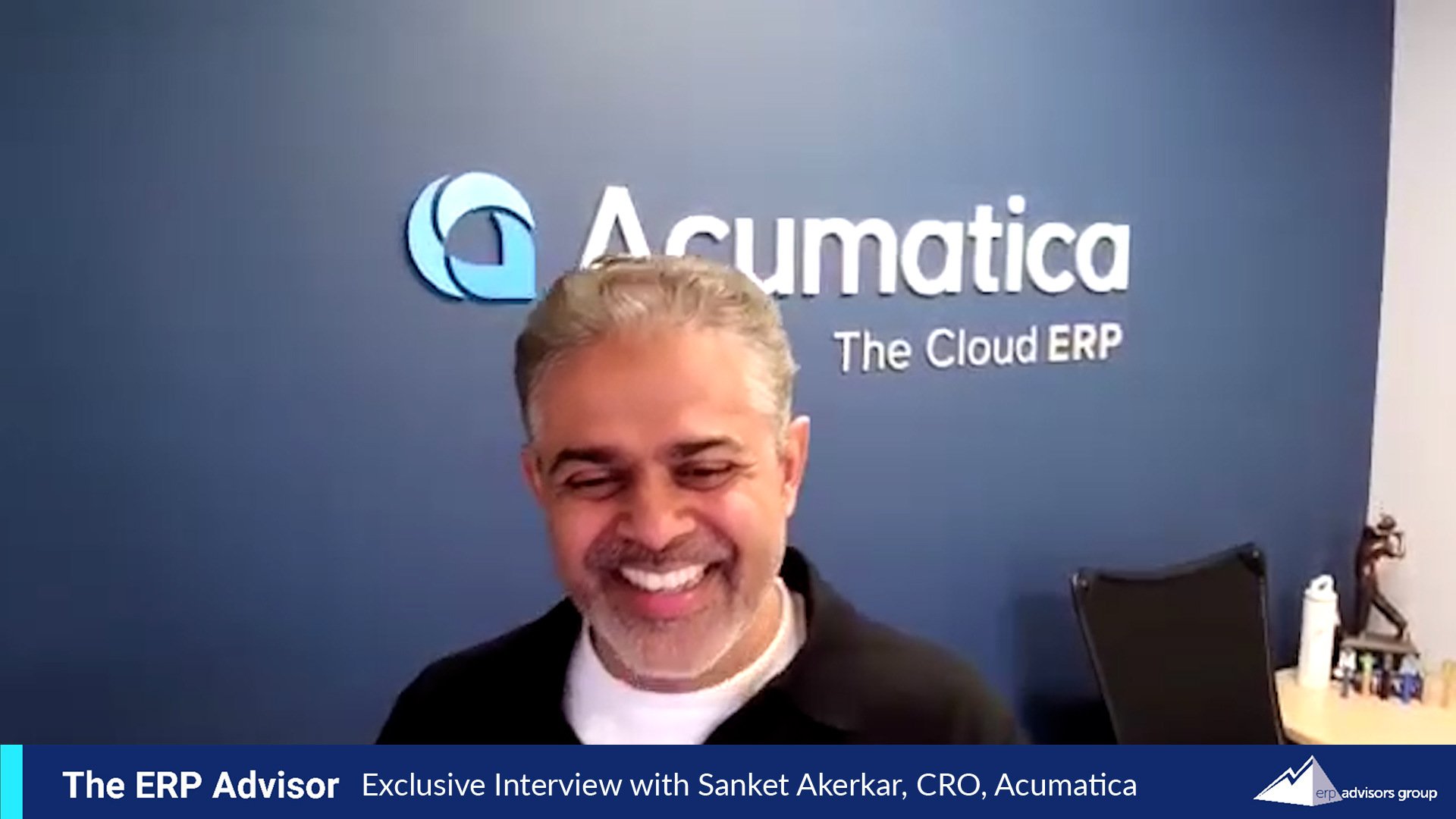
Most ERP failures are rooted in poorly executed implementation methods, whether that be ill-prepared data migration plans, no defined success criteria, a lack of overall preparation, or any combination of these factors. ERP implementation failures, consequently, force businesses to accrue significant losses in time and money, which ultimately puts the business at greater risk. As a result, business leaders find themselves screaming into the void for guidance on managing these common pitfalls, and all too often, their pleas are met with confusing ERP jargon and finger-pointing. In this episode of the ERP Advisor, Shawn Windle addresses the common culprits of failed ERP implementations while uncovering the best practices to ensure businesses achieve real value with their new ERPs.
Avoiding ERP Implementation Failures at Each Milestone
Implementation is the final step in achieving a successful ERP upgrade and tends to be the most taxing. It’s imperative to properly prepare your internal leads in coordination with the implementation partner. The first step in doing so is identifying the most common implementation pitfalls and coordinating a step-by-step strategy to guarantee you overcome each major milestone.
The 8 milestones of an ERP implementation
1. initiate the implementation
The first step is to get the ball rolling on the implementation and outline your initial expectations. This means announcing to staff which solution was purchased, when the implementation will begin, the workload requirements of employees or team members, and more. Steps need to be taken by the business to launch the implementation internally while the implementation partner prepares on their end.
Common Pitfall During the 1st Milestone: Lack of a Designated Internal Project Manager dedicating 20+ hours a week to run the project.
Most project managers (PMs) working with a business from the implementation partner or vendor are working 50-hour weeks, juggling ten other clients aside from your business. This is often the case even if the PM is with a smaller implementation firm. Having a designated internal PM assigned to your implementation not only eliminates confusion but also ensures that someone is overseeing and investing ample time into the project.
2. Analyze your needs
The implementation team must know your business’s needs, and this step may be dynamic throughout the entire implementation if more needs are discovered. It is vital to communicate and document your needs thoroughly with the implementation partner so that even if there is turnover throughout your project, your needs will be met and accounted for. Implementation partners have a general idea of what your business needs, but the client is responsible for sharing their exact expectations for what the system will be able to do.
Common Pitfall During the 2nd Milestone: Lack of Client Lead Involvement in Gathering Requirements.
It’s common for client leads to have heavy workloads and lose track of meetings or lack overall involvement in the key pieces of the implementation. If a client lead isn’t available to gather the business’s requirements, User Acceptance Testing (UAT) preparation, training creation, and the implementation itself all suffer without proper direction. In addition, Subject Matter Experts (SMEs) need to know what to expect when they are evaluating the system as it pertains to their partner or team. This will help accelerate testing and improve the training for end-users. Client leads in the form of departmental leaders, SMEs, or project managers help make the implementation run smoother and they play a vital role in achieving a successful go-live.
3. Migrate the data
ERP Data migrations are the most successful when begun early. Cleansing, validating, and structuring the data can take weeks, if not longer, to complete. Luckily, you can start this process as early as your ERP selection. We encourage businesses to begin this process early to provide ample time for test loads, corrections, and general testing.
Common Pitfall During the 3rd Milestone: not starting early enough.
The longer companies wait to begin their data migration, the greater the likelihood their go-live date will be pushed back. Additionally, information in freeform applications, such as Excel, can cause further delays to the go-live because that data requires more structuring. By getting the data into a controlled environment early, you can reduce the number of delays.
4. configure the software
Because this is a key step to ensuring the effectiveness of a new ERP, implementation partners specialize in software configuration. At this milestone, the client’s internal project manager and the implementation partner should be in lockstep to ensure the solution will meet the needs of the business. Getting the ERP in place and ready for testing will help reduce obstacles in the following steps.
5. build integrations
To enhance a solution’s functionality, businesses often deploy multiple software solutions in a hybrid model, meaning there is a need to build integrations between the systems. While some solutions are built on the same platform and can almost seamlessly communicate, others take experts to develop the coding paths for communication. For example, many businesses also choose to deploy Financial Planning and Analysis (FP&A) tools or Customer Relationship Management (CRM) tools. Additionally, integrations include connections with your payroll provider, bank, and more. These need to be taken care of with the implementation partner and the institution (such as your bank) early on so they can be tested.
Common Pitfall During the 5th Milestone: failing to incorporate integration oversight.
The client’s internal project manager needs to oversee integrations because the implementation partner does not know about all your outside requirements. The implementation partner is not responsible for calling the bank to set up the new integration outside of the system, so you need someone who will ensure this is accomplished.
6. conduct user acceptance testing
The next step is to conduct User Acceptance Testing (UAT) to ensure the system is operating sufficiently and that key users can perform important tasks. It’s vital to have the Subject Matter Experts (SMEs) conduct the UAT since they will be the go-to person for future questions and training. This step also allows SMEs to provide feedback on which processes went well and which ones need improvement.
Common Pitfall During the 6th Milestone: waiting to conduct uat.
Companies may want to wait until software configuration is complete; however, waiting to start UAT until after going live can cause problems when gaps in functionality or broken processes go unnoticed. Starting earlier allows for gradual changes to be made during the configuration instead of having to shut down post-go-live to completely overhaul the system.
7. train users
After the SMEs give the final go-ahead for the system and have tested the functionality, it is time to train end-users on the new software. Early training creates a smoother transition at go-live and empowers other users to assist each other in learning the system. The more accustomed the team is to the software, the easier it will be for them to help each other if a problem arises.
Common Pitfall During the 7th Milestone: limiting time available for training.
Whether it’s expecting the implementation partner to train everyone, eliminating training time to accommodate other tasks, or avoiding training altogether, restricting training time puts the business at risk of implementing a system no one can use, losing employees who are left confused, and an overall decline in their ability to operate. Companies should begin as early as possible to avoid using go-live as their testing and training session.
8. go-live
You have made it! After months of investment and diligence, your team has reached go-live. This can be a tumultuous process for everyone involved and this is the time to enjoy what you have accomplished by rewarding key employees, taking a break, and showing appreciation for your implementation partner. By the month’s end, you will see the results of your efforts!
Conclusion
If these eight steps are done correctly, companies are guaranteed to reach a successful go-live. By preparing early on and working with industry experts to confront each milestone, you can reach your ERP goals with fewer obstacles. If you need help navigating your ERP implementation, schedule a free consultation today.





